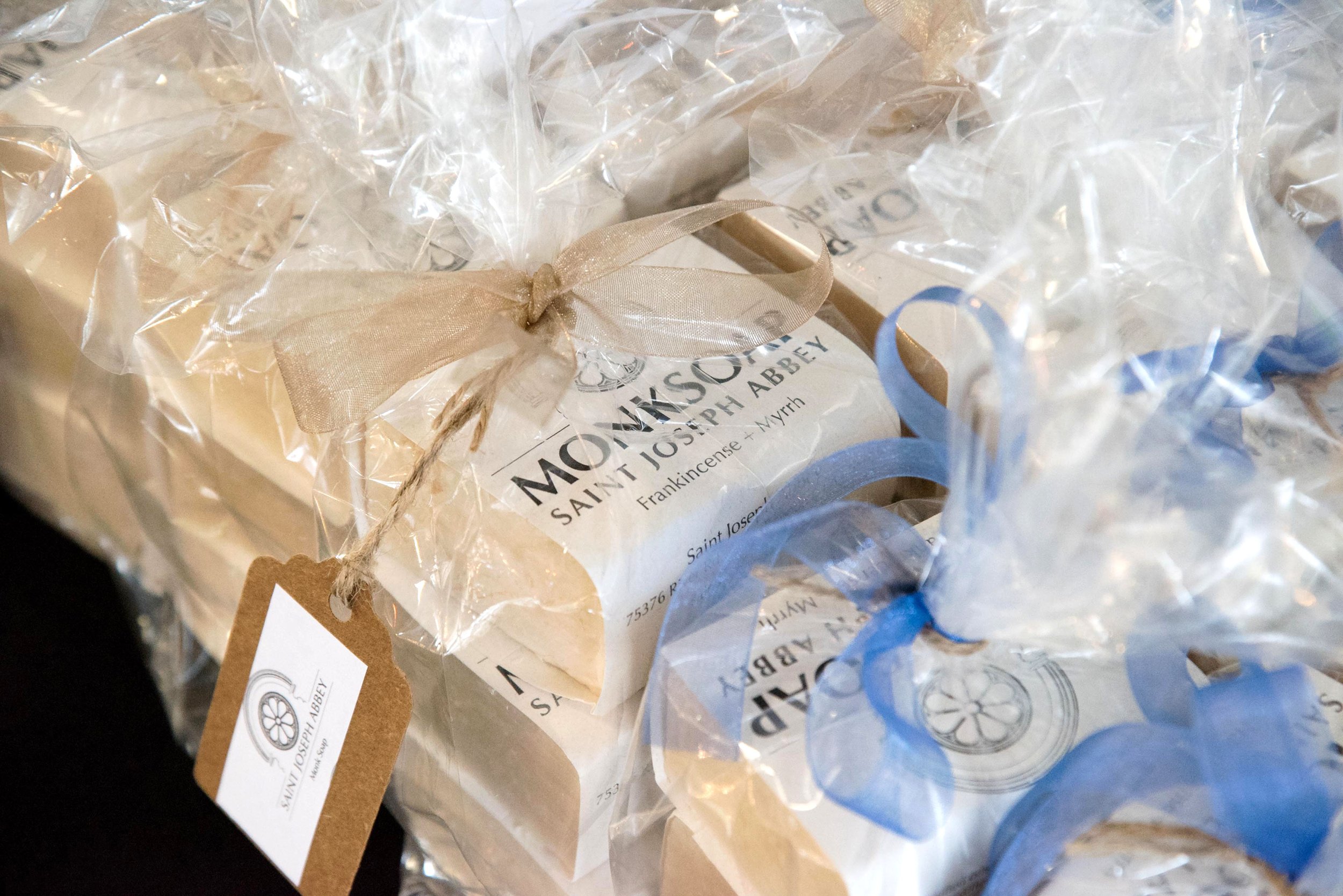
ABOUT MONKSOAP
“If there are artisans in the monastery, they are to practice their craft with all humility...”
- Rule of Saint Benedict, Chapter 57

Br. Austin Simon, O.S.B., is manager of MONKSOAP.
Requests for Monk-Made Products Led to the Creation of the Abbey’s MONKSOAP Business
The first bars of MONKSOAP went on sale in the Saint Joseph Abbey Gift Shop and at The Southern Curator, a shop in Covington, in October 2011, and by the end of the first fiscal year, approximately 1,200 bars in 30 fragrances were being produced monthly.
In 2023, the Abbey sold approximately 18,000 bars of soap through the Abbey Gift Shop and to 29 commercial customers across the continental U.S. While the fragrance numbers have decreased over the years, the soap’s popularity continues to grow.
HOW IT ALL STARTED
In 2011, former Abbot Justin Brown, O.S.B., tossed around the idea of starting a soap-making business with Br. Andrew Faraci, O.S.B., after numerous visitors to the Gift Shop and Retreat Center requested Abbey and monk-made items. The Gift Shop was already selling soap and lotion made by the Benedictine Sisters of Perpetual Adoration in Clyde, Mo., so in June of that year Br. Andrew and others visited Sr. Cathleen Marie Timberlake in Missouri to learn more about soap making and to see just what equipment and supplies would be needed.
A contest was held to name the product, and the second-floor space above the Abbey kitchen was tapped for the MONKSOAP operation. Initial equipment purchases included a commercial scale for measuring soap ingredients and Crock-Pots, handheld mixers, and handheld stick blenders for “cooking.” Molds for cooling and cutting the soap into bars were handcrafted from scrap lumber by Joe Jarrell in Abbey Caskets. Those molds are still used today.
“The tables we first used were old Abbey doors sitting on saw horses,” Br. Andrew said. Metal tables were acquired a few years later.
As the business grew, hauling heavy ingredients and supplies up the small flight of stairs became more difficult. The Abbey eventually applied for and received a grant to fund the building of a new soap shop, which was more conducive to production and also provided room for expansion.
By this time Br. Austin Simon, O.S.B., was leading MONKSOAP, and during the summer of 2019 the operation moved into its new building.
“Within a few months we started taking on new customers, whereas before we were having to turn people away,” he said. “We could now make more soap, store more, and cure more, with the extra space.”
NEW PRODUCTS ADDED
MONKSOAP expanded its inventory line after moving into the new building, adding lotion bars in 2019 and Monk Candles in 2021.
Volunteer Kay Irwin brought the idea of the lotion bar back to the Abbey after attending a soap convention in 2019. She had used a similar product before on an overseas trip, and she thought a lotion bar would be easy to produce and become a popular item.
“We started making it, and it sells well,” Br. Austin said.
Initially, candles were going to be a separate business for the Abbey, and supplies had been purchased and a test batch made before an assignment change stopped progress. The candlemaking items were put into a closet in the MONKSOAP building, and they were forgotten about until Br. Austin went looking around for volunteer gifts.
“When I found the supplies I looked up how to make candles and made them for my volunteers,” he said. “Abbot Justin came in while I was making them, and then he and Kay started making them, and we made 80 candles and they sold very well in the Gift Shop during Christmas in 2019.”
But things got busy around the soap shop, and the candlemaking supplies went back into the closet until 2021. That’s when volunteer Lynne Chaplain, who had some candlemaking experience, took on the job. Now, with the help of volunteer Cindy Fisher, Lynne makes 36 candles every two weeks.
MONKSOAP TODAY
Two monks and five volunteers currently work five to six days a week making MONKSOAP. Six batches are made at a time in one kettle (Crock-Pots were long ago replaced), and once the soap is poured into molds it must cure for two weeks before being cut, wrapped and readied for distribution.
A final product that is produced in the soap house is a direct byproduct of the soap - the Soap Saver. These are shavings from the soap that are put in a mesh bag, that when put under running water it creates a gentle exfoliating lather. These bags are sold in the Gift Shop.
“We can’t keep them in stock,” Br. Austin said.










